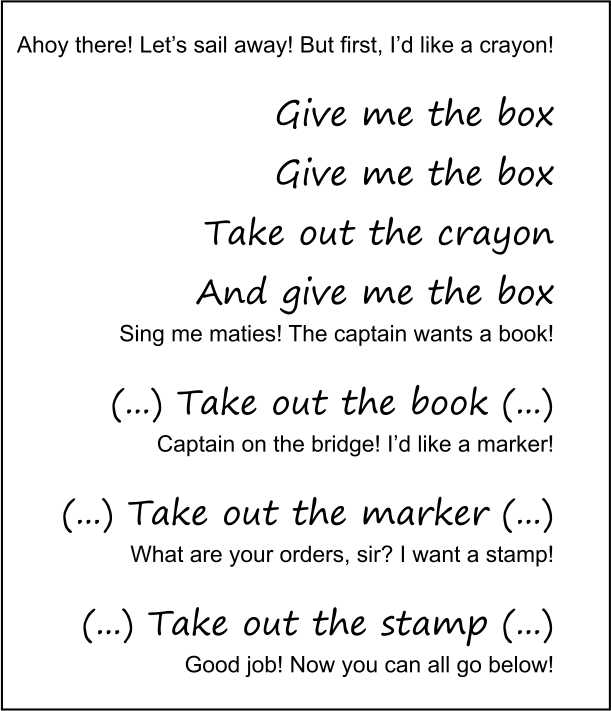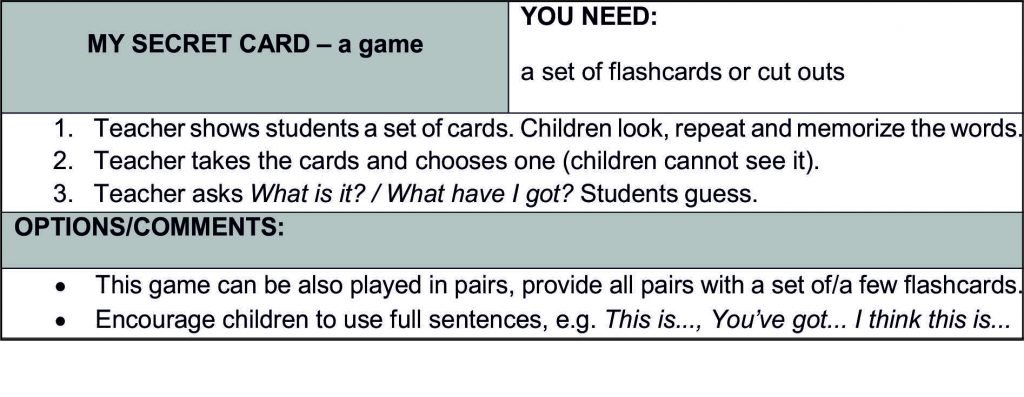This is the first of a series of ten publications dedicated to teaching pre-school children aged 2-7 that appeared in the Teacher Magazine in 2013. Each article presents a different aspect of an approach which aims at maximizing children’s linguistic potential, often undervalued in this age group. Can the pre-school kids learn more English – yes they can, provided they are given appropriate opportunities. Will they cope with increased linguistic (and cognitive) challenge? They will if we are smart about how we orchestrate it. Does this mean a huge amount of preparation for the teacher? Not necessarily, especially if you know where to look for help and ideas. The latter is where this article series comes in.
In this episode we are presenting some techniques for how to exploit the potential of a good song.
Modern, age-relevant content
Children like the world of music and rhythm – they learn hundreds of songs in nursery school or at home. They come across many songs on TV. Young students usually do not feel embarrassed or ashamed to sing, even if they are not predisposed to do so. Songs are a great source of language in context. When children encounter full phrases there is a good chance that they will remember the whole sentences as they go along with the catchy melody and memorable rhythm. If you enrich the singing with gestures, you are likely to make students love the songs and quickly remember them by heart. It is important though not to teach the songs in a way children do not understand the lyrics thoroughly. Meaning should be crystal clear to students, so that the kids learn more than a mixture of unknown sounds.
PREPARE: a box, a set of cut-outs, or real objects representing the ones mentioned in the song (here: crayon, book, marker, stamp)
LISTEN TO THE SONG:
THE LYRICS:
Note that the lyrics below contain several lines written in small font. They do not belong to the main text. These phrases or sentences are not to be learnt by Ss by heart or practised. Ss may willy-nilly acquire some extra language material thanks to that. By the way, the lines also help you to prepare the prompts for the song.
INTRODUCING THE SONG: When you introduce the song for the first time from the recording, tell your students what it is about. It is useful to resort to some L1 or just say a few words from the song that kids already know.
MIME AND GESTURE:
- Students sit in a circle and pass the box around singing “give me the box.”
- After the words: “take out the (crayon)” Teacher stops the recording and waits for the child who is holding the box to take out the right flashcard or object, (in this case the crayon).
- The same with the other stanzas.
- After some time, when students become familiar with the song, you will not have to stop the recording.
CONFIRMING UNDERSTANDING: While playing the song stop the recording and explain any difficult chunks.
COMMENTS: This song may be used to revise other vocabulary, too. As soon as students know the song by heart, you may use it to revise whichever vocabulary you want. You just need to shout out the proper words in between the stanzas.
THERE’S MORE TO A SONG: You may easily turn the song into a game.
- Children stand in two lines facing one another, so that everybody has a partner.
- Each pair has got a box filled with flashcards or cut-outs. It is better if you have a few sets of the same pictures, however, all pairs do not have to have exactly the same set.
- Students sing the song and rhythmically pass the box to their partner.
- Teacher calls out a word and the student who is holding the box at that moment looks for the correct picture.
Challenging young learners
Appropriate motivation is the key to a successful lesson and maximizing its learning potential. So, how about a quick competition? Competitions are indeed usually very motivating for learners, but not for necessarily for (younger) pre-schoolers in our experience. Even if they like to compete, they are not ready yet to face any kind of failure. Those who lose tend to fall into despair (including loud crying) while those who win forget it in a short while. The fact that children should not compete does not mean you should not challenge them. Quite the contrary, at least some of our young learners definitely need to be challenged in order to become fully engaged in a language task. We just need to be very sensitive in setting up such challenges. Here is how.
HOW TO CHALLENGE YOUR STUDENTS IN A SAFE WAY?
- Challenge your students as a whole group, not as individuals
- Promise a reward for the whole group for singing the song nicely. Remember it does not have to be something tangible like a sticker or stamp every time. Your applause, a big smile on your face, or playing the kids’ favourite game will often do the job just as well.
- Choose a mascot to watch and judge the performance and challenge the students to perform well. Do not accept a task as done until students engage enough. Tell them the mascot wants them to repeat or sing again as it knows they can do better: sing a song louder, do some actions right or point at flashcards with more energy. You can make up some gestures showing the mascot’s approval or disapproval.
Some spare time? Why not practise the new vocabulary in a flashcard game?
After completing the exercises children should remember full phrases and sentences (not single words!). Enriching the song with gestures should help them grasp the meaning. The game at the end makes it memorable and fun.
CLICK FOR THE NEXT EPISODE OF THIS SERIES.
If you like this article, let us know! Comment, like or share! Thank you!



